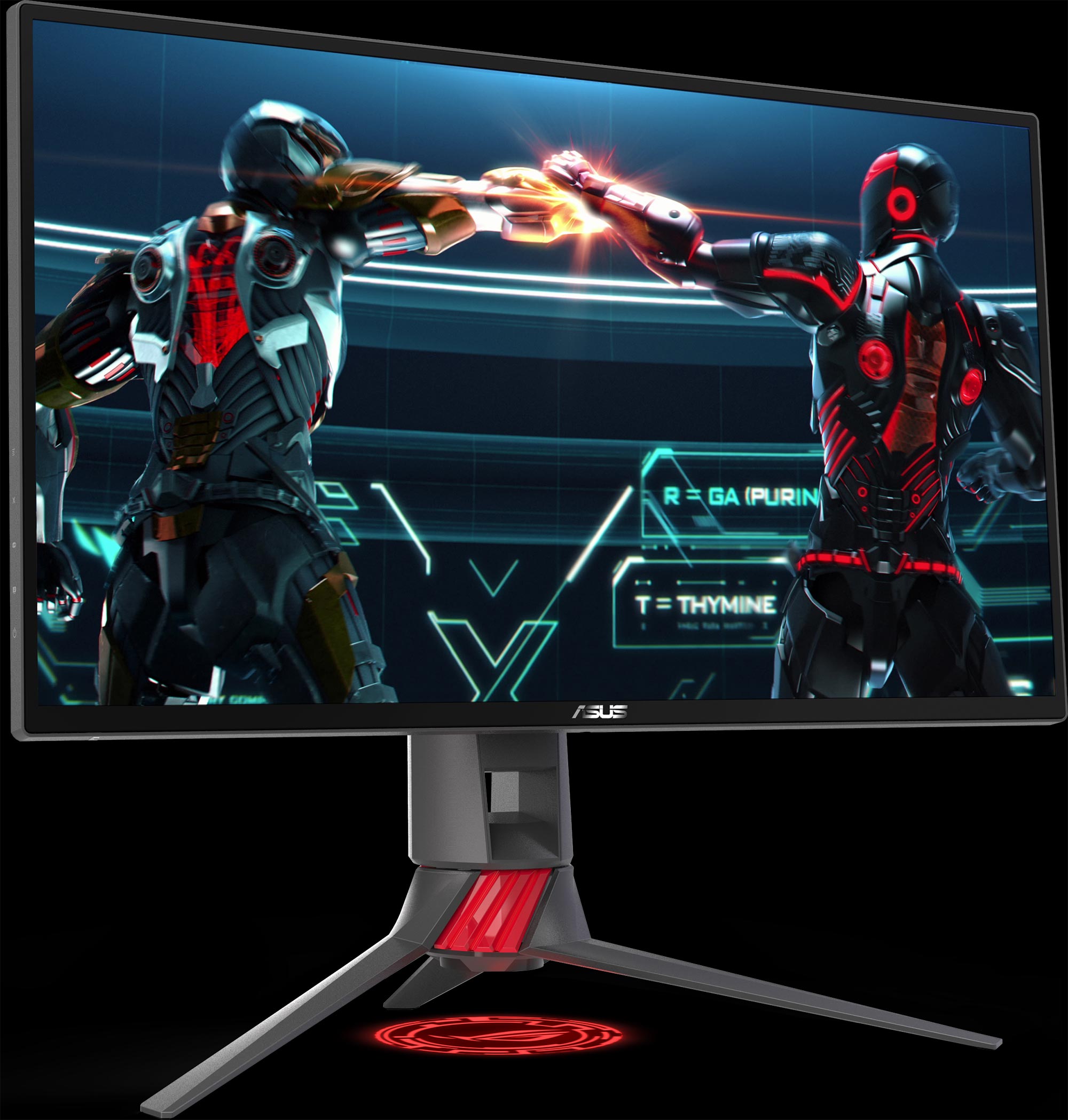Strix brings FreeSync gaming monitors into the ROG family
At Computex 2017, the ASUS Republic of Gamers rolled out a collection of Strix gaming monitors compatible with AMD’s FreeSync technology. The new displays bring bigger panels and higher refresh rates that draw you deeper into your favorite games. They include the Strix XG32VQ, which cranks a massive 31.5” panel up to 144Hz; the Strix XG32VQ, which applies the same refresh rate to a 27-incher ideal for surround setups; and the Strix XG258, which takes competitive esports to an incredible 240Hz.
All three are compatible with Adaptive-Sync technologies like AMD’s FreeSync. They dynamically adjust the refresh rate to match the frame rate of the graphics card, resulting in smoother gameplay with lower input lag and no visual tearing. If you want to reduce blurring with a fixed refresh rate instead, we’ve incorporated an Extreme Low Motion Blur mode that strobes the backlight to improve the look of rapid motion.
The Strix XG32VQ has a big and beautiful curve
As unoriginal as it sounds, size really does matter for gaming monitors. The bigger the view of your digital world, the easier it is to get sucked right into it. That’s why we’ve given the Strix XG32VQ a huge 31.5” panel that works well up close and at a distance.
Curved on an 1800R radius, the screen gives you a better view of the far edges and corners. The wide 178° viewing angles of its IPS-type panel preserve the picture even if you’re not sitting dead center, so you can gather around teammates or opponents for multiplayer action that looks great for the whole crowd. The WQHD 2560x1440 resolution prioritizes performance over pixel density, which will let you explore the top end of the 144Hz refresh range without spending a fortune on multiple graphics cards.
Aura Sync lighting makes the XG32VQ compatible with a comprehensive ecosystem of RGB-equipped components that synchronize illumination across an entire PC, both inside and out. You can match the colors of the rest of your rig or have the LEDs react to the in-game audio.
Dual DisplayPort 1.2 inputs provide connectivity for multiple PCs, while one HDMI 2.0 offers flexibility for consoles and other devices. And there are USB 3.0 ports built in. Considering the size and flexibility, it’s easy to see the Strix XG32VQ replacing a traditional TV in dorm rooms and small apartments, especially for cord cutters addicted to streaming Netflix, YouTube, and Twitch.
Balance speed and affordability with the Strix XG27VQ
Affordable gaming hardware delicately balances performance and features to give you the most bang for your buck. In the Strix XG27VQ, we’ve focused on giving gamers an engaging high-refresh experience that won’t break the bank.

Like its larger sibling, the screen wraps around an 1800R curve that improves your view of the corners, where important HUD elements tend to live. The Full HD 1080p resolution means you can make the most of the 144Hz peak refresh rate without blowing your budget on high-end graphics horsepower. It also keeps the performance requirements reasonable if you want to give your battlestation a panoramic upgrade with a triple-monitor array.
Although the Strix XG27VQ has onboard Aura RGB lighting, multi-component synchronization isn’t supported. Video inputs span DisplayPort, HDMI, and DVI, allowing even older systems to connect without an adapter. You also get useful features shared with the rest of the Strix family, like an intuitive interface for the on-screen display and separate DisplayWidget software that controls the monitor from the Windows desktop.
Compete at 240Hz on the Strix XG258
ROG is at the forefront of esports; we sponsor numerous professional teams and work with top players to improve our products. The Strix XG258 reflects the fact that even a small performance advantage can make you more competitive at the highest level. Its 240Hz maximum refresh rate is four times faster than what you get in typical PC monitors—and a substantial step up from the 144Hz ceiling of its Strix teammates. At 240Hz, the delay between new frames is just 4.2 ms, compared to 6.9 ms on 144Hz gaming monitors.
Minimizing milliseconds extends to the panel, whose 1-ms response time enables quick pixel transitions that reduce blurring with fast movement and frenetic action. The 24.5” screen has a Full HD 1080p resolution to give your system the best shot at sustaining the 240 FPS required to push the Strix XG258 to its limits.

Aura RGB LEDs enable color coordination with the rest of your setup. Sync isn’t supported, so you’ll have to match colors manually. You can mix and match connected devices, too. With dual DisplayPort 1.2 and HDMI (2.0 and 1.4) inputs, the Strix XG258 can plug into range of PCs, laptops, and other devices simultaneously.
Pricing and availability
All of these new ROG Strix gaming monitors will be available starting in Q3. Please contact your local ASUS or ROG representative for details on pricing in your region.


